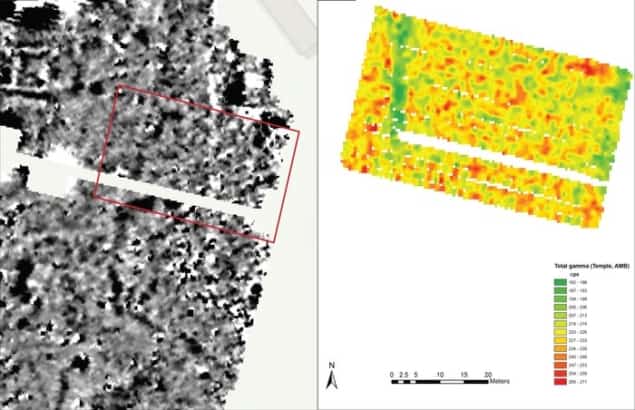
Archaeologists have adapted several techniques from physicists and the next one could be the detection of gamma rays in the field. For the first time, a gamma-ray spectrometer has been used in an archaeological setting. The instrument is normally used to identify radioactive contamination on nuclear sites, but now researchers at the University of Reading excavation in Roman Silchester in southern England have used it to find buried buildings and other objects. This was done by detecting gamma radiation emitted during the natural decay of elements in these materials – which can be measured up to one metre under the ground.
The detector was able to find a buried wall, for example, because the wall was made of materials that had a lower level of radioactivity than the surrounding soil. This suggests the wall was made from materials imported from a different geographical area. The technique is also particularly good at identifying materials that have been altered by industrial processes such firing in a kiln – which can change the amount of radioactive elements that an object contains.
The spectrometer is called Groundhog and it is made by Nuvia. You can read more about the study in this paper: “Portable gamma ray spectrometry for archaeological prospection: A preliminary investigation at Silchester Roman Town”.
Remembering charge
Our brains have a remarkable capacity for storing and processing information in very efficient ways. That is why researchers are keen on developing neuromorphic computers that mimic how the brain works. The memristor is a component that is used in many neuromorphic architectures. It “remembers” the amount of charge that has flowed through it, with the information being stored in terms of the device’s resistance. Or at least it does this in principle, because researchers have not yet been able to create a device that operates as an ideal memristor.
Now, Feng Zhao and Brandon Sueoka at Washington State University have created a memristor that takes advantage of the material properties of honey. They sandwiched a layer of honey between a copper electrode and a copper oxide electron to create their memristor. They then looked at how the memristor performs in a circuit that mimics how information is passed between two neurons.
They found that the device’s performance was on par with other comparable memristors. They also showed that the device could be dissolved in water. This means that the device is partly biodegradable and that it would be easy to recycle.
They report their results in this paper: “Memristive synaptic device based on a natural organic material—honey for spiking neural network in biodegradable neuromorphic systems”.


